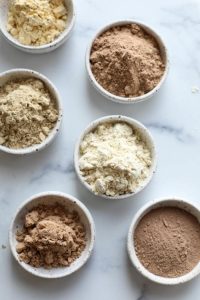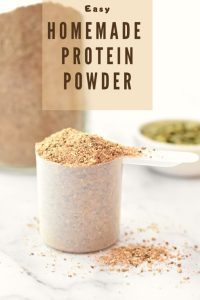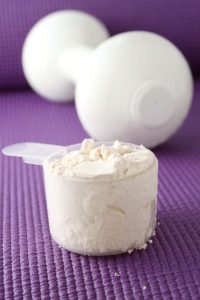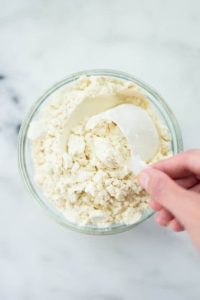
Unsweetened protein powder is a popular dietary supplement for people focused on fitness and overall health. It’s a concentrated source of protein, one of the essential macronutrients your body needs to function. This article explores the world of unsweetened protein powder, helping you decide if it’s right for you and how to use it effectively.
What is Unsweetened Protein Powder?
Unsweetened protein powder is simply protein extracted from various food sources, most commonly whey, casein, soy, pea, or rice. The extraction process removes most of the other components, leaving a concentrated protein powder with minimal carbohydrates, fats, and sugars. This makes unsweetened protein powder a great choice for people who want to increase their protein intake without adding unnecessary calories or sugars to their diet.
Benefits of Unsweetened Protein Powder
There are several potential benefits to including unsweetened protein powder in your diet. Here are a few:
-
Increased protein intake: Protein is important for building and repairing muscle tissue, and it also helps with satiety and feeling full. Unsweetened protein powder is a convenient way to boost your protein intake, especially if you struggle to get enough protein from whole foods alone.
-
Weight management: Protein can help you feel fuller for longer, which can aid in weight management efforts. Some studies suggest that a higher protein diet can help boost metabolism and burn more calories.
-
Muscle building and repair: Protein is essential for building and repairing muscle tissue. Athletes and people looking to build muscle mass may find that unsweetened protein powder helps them reach their fitness goals.
-
Plant-based protein option: For people who follow a vegan or vegetarian diet, unsweetened protein powder from plant-based sources like pea or rice protein can be a valuable source of protein.
-
Versatility in your diet: Unsweetened protein powder is a versatile ingredient that can be added to a variety of foods and beverages. You can mix it into smoothies, yogurt, oatmeal, or baked goods.
It’s important to note that protein powder is not a magic bullet for weight loss or muscle gain. It should be used in conjunction with a healthy diet and exercise program.

Choosing the Right Unsweetened Protein Powder
With so many unsweetened protein powders on the market, it can be overwhelming to choose the right one. Here are some factors to consider:
Protein source:
Whey and casein are popular protein sources derived from milk. Soy protein is another common option. Plant-based protein powders such as pea rice and hemp protein are good alternatives for vegans and vegetarians.
Taste:
Unsweetened protein powder doesn’t have much flavor on its own. However, you can find flavored varieties or add your own flavorings to suit your taste.
Mixability:
Consider how easily the protein powder mixes into liquids. Some protein powders mix more easily than others.
Cost:
Unsweetened protein powder can vary in price depending on the protein source, brand, and quality.
Talk to your doctor or a registered dietitian before adding protein powder to your diet, especially if you have any underlying health conditions.

How to Use Unsweetened Protein Powder
Protein powder is a versatile ingredient that can be used in many ways. Here are some ideas:
-
Protein shakes: Mix unsweetened protein powder with water, milk, or a plant-based milk alternative for a quick and easy protein shake. You can add fruits, vegetables, nut butters, or other ingredients to boost flavor and nutrients.
-
Add to smoothies: Protein powder can be a great way to add protein to your favorite smoothies.
-
Baked goods: Some protein powders can be used in baking recipes to add protein and boost the nutritional content of muffins, pancakes, or waffles.
-
Yogurt topping: Stir protein powder into plain yogurt for a protein-packed snack or breakfast option.
-
Oatmeal mix-in: Add a scoop of protein powder to your oatmeal for an extra protein boost.
Be sure to follow the instructions on the protein powder packaging for recommended serving sizes and mixing instructions.

Protein Powder: Not a Replacement for Whole Foods
Protein powder can be a valuable tool for increasing protein intake and adding variety to your diet. However, it’s important to remember that it is not a replacement for whole foods.
A healthy diet should be rich in whole foods, including fruits, vegetables, whole grains, and lean protein sources. Protein powder can be a helpful supplement, but it shouldn’t replace these core elements of a healthy diet.
Making the Most of Protein Powder
Protein powder can be a great way to add protein to your diet, but it’s important to use it safely and effectively. Here are some additional tips:
-
Start slow: If you’re new to protein powder, start with a small serving size and gradually increase it as your body adjusts.
-
Listen to your body: Pay attention to how you feel after consuming protein powder. If you experience any digestive discomfort, reduce the amount you consume or stop using it altogether.
-
Not a replacement for a balanced diet: Protein powder is a supplement, not a replacement for a balanced diet. Focus on getting most of your protein from whole food sources like lean meats, poultry, fish, eggs, beans, lentils, nuts, and seeds.
-
Stay hydrated: When you increase your protein intake, it’s important to stay well-hydrated. Drink plenty of water throughout the day.

Exploring Protein Powder Recipes
Protein powder adds a versatility factor to your diet. Here are some recipe ideas to get you started:
Simple Protein Smoothie:
- Blend protein powder with your favorite fruits (fresh or frozen), milk (dairy or plant-based), and a sprinkle of cinnamon for a nutritious and refreshing drink.
Power-Packed Pancakes:
- Add a scoop of unsweetened protein powder to your favorite whole-wheat pancake batter for an extra protein boost in your breakfast.

Post-Workout Protein Balls:
- Combine rolled oats, nut butter, protein powder, and dried fruit for a healthy and satisfying snack after your workout.
These are just a few ideas to get you started. With a little creativity, you can incorporate protein powder into many delicious and healthy recipes.
Remember, it’s always a good idea to consult a doctor or registered dietitian before making significant changes to your diet, especially if you have any underlying health conditions.





